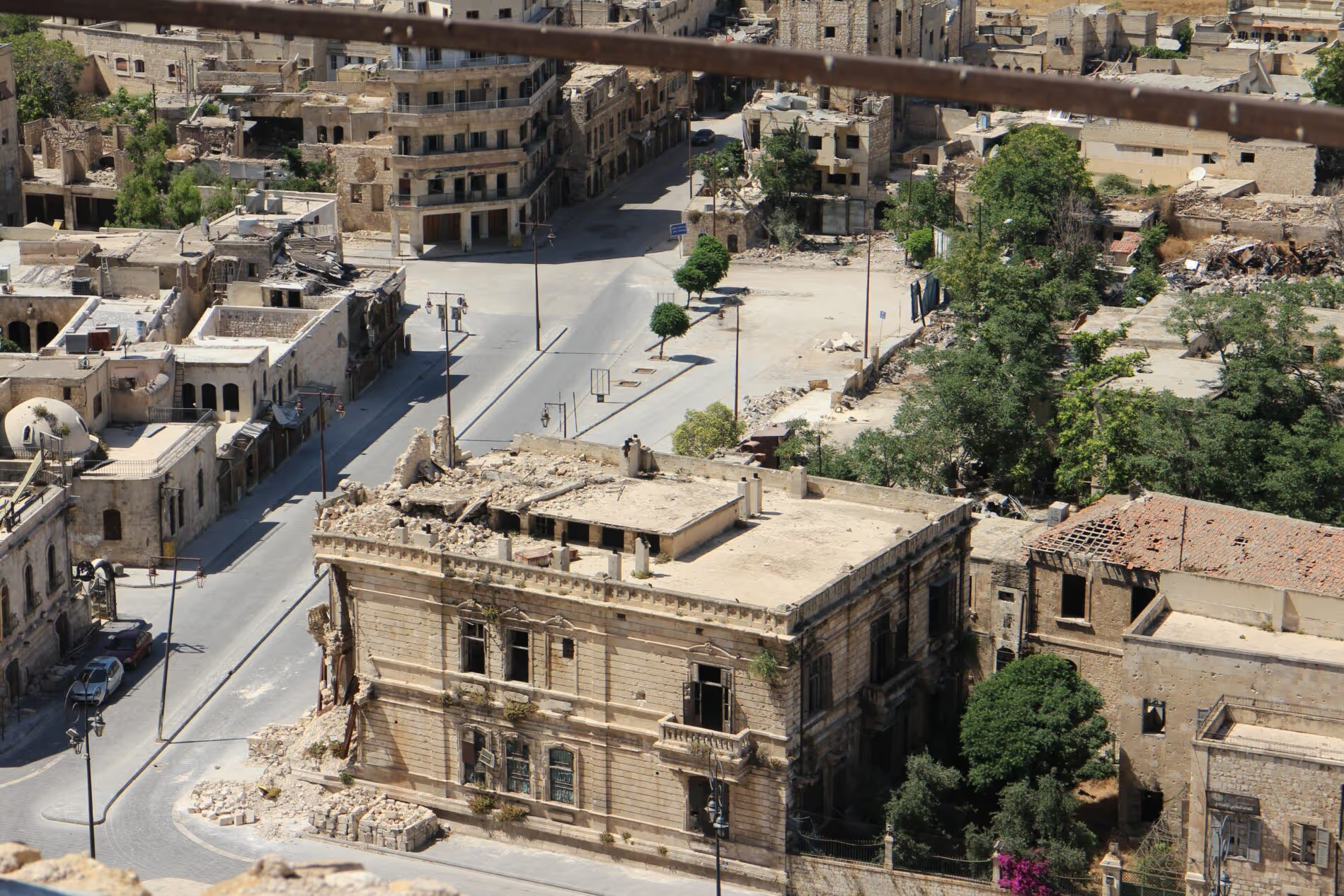Evaluating the public health impacts of attacks on health in Syria

Project overview
This study sought to understand the nature and severity of impacts of attacks on medical facilities and personnel in Syria.
Project solution
This project offers [specific solution or intervention] to tackle [challenge]. By implementing [strategies, tools, or innovations], the project aims to achieve [desired outcomes]. The approach is designed to [specific actions or methods] to bring about meaningful change in [community, region, or issue area].
Expected outcomes
This project aims to achieve [specific outcomes], such as [measurable results, improvements, or changes]. The expected impact includes [benefits to the target community, advancements in research or innovation, or long-term effects]. By the end of the project, we anticipate [specific changes or milestones] that will contribute to [broader goals or objectives].
Principal Investigator: Rohini Haar, University of California at Berkeley
Research Snapshot: THE IMPACT OF ATTACKS ON SYRIAN HEALTH SYSTEMS
This mixed-methods study found that airstrikes on Syrian hospitals have deep, severe impacts on the health system, on service utilisation, and on the health workforce that may be irreversible.
What did the study set out to achieve?
This study sought to understand the nature and severity of impacts of attacks on medical facilities and personnel in Syria. It aimed investigate the impacts on availability and utilisation of services as well as on health outcomes. It addresses a critical topic: the intermediate and long-term effects of bombing health clinics on the community’s health is largely unknown, and the numbers of these attacks has risen globally.
Using a multi-disciplinary, mixed-methods approach the study conducted:
- Quantitative data analysis, including epidemiological/biostatistical analysis, as well as geo-temporal visualisation and mapping techniques to assess the health impacts of attacks on health by examining service availability and utilisation, as well as disease incidence.
- Qualitative key informant interviews with health workers and administrators to understand how such attacks influence their decision-making and response.
- Case studies, employing both qualitative and quantitative methods, to assist in an in-depth exploration of attacks that most profoundly affected service availability and utilisation.
What were the key findings?
- Attacks on health facilities significantly reduced health service use, particularly outpatient and trauma consultations. Services were severely hampered immediately following an attack and remain disrupted for at least three weeks. Thousands of patients lost access to consultations, diagnoses, medications/ treatments, and procedures.
- There were severe, cumulative, and long-lasting impacts on the health system at multiple levels, directly affecting care provision. Attacks affected governance (organisational fragmentation, communication breakdowns and barriers for leadership). They led to financing instability, destruction and loss of medicines, infrastructure, and equipment.
- Profound personal and professional repercussions were found in health workers, including ‘anticipatory stress’, fear, and anxiety about future attacks; moral injury, due to conflicting obligations of caring for self/family and caring for patients; precarious employment, and lack of consistent pay. Intersectional vulnerabilities particularly impacted women, rural health workers, and low-income staff.
- However, health workers rejected both ‘hero’ and ‘victim’ narratives. They saw themselves fighting on the frontlines for human rights, social justice and peace, in solidarity with colleagues and community.
What does this mean for policymakers and practitioners?
Violent attacks have devastating impacts on health systems, patients, and communities that may never be reversed. Responses must be multi-faceted, considering the complex impacts of attacks on every level of the health system. Increased international resources are needed to address attacks and mitigate their impacts. Deprioritising the Syrian crisis will lead to severe and exacerbated needs in the long term. Halting violent attacks, and holding perpetrators accountable, must remain an international priority.
Findings on financial instability resulting from attacks highlighted that international decision-making tended to allocate resources “top-down”, possibly worsening systemic impacts of attacks through resource misallocation. Local stakeholders should be consulted to improve response effectiveness and resource targeting.
The resistance and solidarity among health workers suggests that bolstering support for the workforce would be a good investment, helping to strengthen ongoing services and community based responses.
It is hoped the findings will further inform health service programme planning and preparedness in conflict and post-conflict Syria, and present a model for monitoring public health vulnerabilities stemming from attacks on health in other contexts.
Project delivery & updates
Stay up to date with the latest developments from this project. Here, you will find details on what has been delivered, resources created, and regular updates as the project progresses. Access key documents, reports, and other materials to see how the project is making an impact.
Resources
Journal article
LEARN MOREJournal article
LEARN MOREArticle
LEARN MOREArticle
LEARN MORE